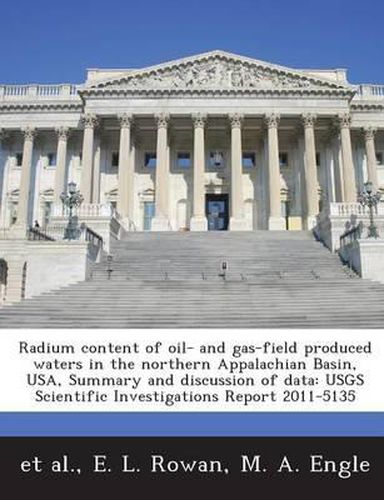Readings Newsletter
Become a Readings Member to make your shopping experience even easier.
Sign in or sign up for free!
You’re not far away from qualifying for FREE standard shipping within Australia
You’ve qualified for FREE standard shipping within Australia
The cart is loading…






Radium activity data for waters co-produced with oil and gas in New York and Pennsylvania have been compiled from publicly available sources and are presented together with new data for six wells, including one time series. When available, total dissolved solids (TDS), and gross alpha and gross beta particle activities also were compiled. Data from the 1990s and earlier are from sandstone and limestone oil/gas reservoirs of Cambrian-Mississippian age; however, the recent data are almost exclusively from the Middle Devonian Marcellus Shale. The Marcellus Shale represents a vast resource of natural gas the size and significance of which have only recently been recognized. Exploitation of the Marcellus involves hydraulic fracturing of the shale to release tightly held gas. Analyses of the water produced with the gas commonly show elevated levels of salinity and radium. Similarities and differences in radium data from reservoirs of different ages and lithologies are discussed. The range of radium activities for samples from the Marcellus Shale (less than detection to 18,000 picocuries per liter (pCi/L)) overlaps the range for non-Marcellus reservoirs (less than detection to 6,700 pCi/L), and the median values are 2,460 pCi/L and 734 pCi/L, respectively. A positive correlation between the logs of TDS and radium activity can be demonstrated for the entire dataset, and controlling for this TDS dependence, Marcellus shale produced water samples contain statistically more radium than non-Marcellus samples. The radium isotopic ratio, Ra-228/Ra-226, in samples from the Marcellus Shale is generally less than 0.3, distinctly lower than the median values from other reservoirs. This ratio may serve as an indicator of the provenance or reservoir source of radium in samples of uncertain origin.
$9.00 standard shipping within Australia
FREE standard shipping within Australia for orders over $100.00
Express & International shipping calculated at checkout
Radium activity data for waters co-produced with oil and gas in New York and Pennsylvania have been compiled from publicly available sources and are presented together with new data for six wells, including one time series. When available, total dissolved solids (TDS), and gross alpha and gross beta particle activities also were compiled. Data from the 1990s and earlier are from sandstone and limestone oil/gas reservoirs of Cambrian-Mississippian age; however, the recent data are almost exclusively from the Middle Devonian Marcellus Shale. The Marcellus Shale represents a vast resource of natural gas the size and significance of which have only recently been recognized. Exploitation of the Marcellus involves hydraulic fracturing of the shale to release tightly held gas. Analyses of the water produced with the gas commonly show elevated levels of salinity and radium. Similarities and differences in radium data from reservoirs of different ages and lithologies are discussed. The range of radium activities for samples from the Marcellus Shale (less than detection to 18,000 picocuries per liter (pCi/L)) overlaps the range for non-Marcellus reservoirs (less than detection to 6,700 pCi/L), and the median values are 2,460 pCi/L and 734 pCi/L, respectively. A positive correlation between the logs of TDS and radium activity can be demonstrated for the entire dataset, and controlling for this TDS dependence, Marcellus shale produced water samples contain statistically more radium than non-Marcellus samples. The radium isotopic ratio, Ra-228/Ra-226, in samples from the Marcellus Shale is generally less than 0.3, distinctly lower than the median values from other reservoirs. This ratio may serve as an indicator of the provenance or reservoir source of radium in samples of uncertain origin.